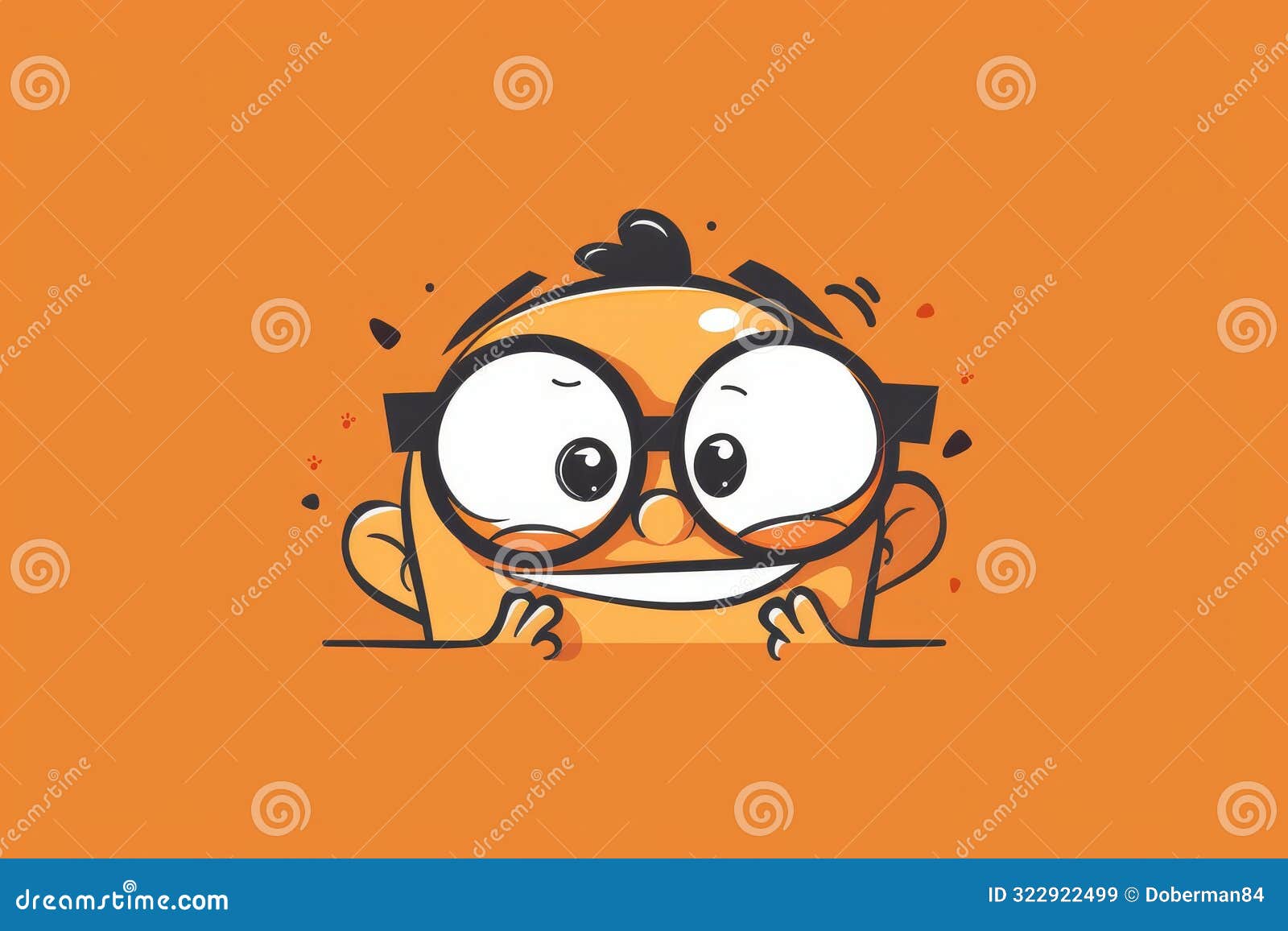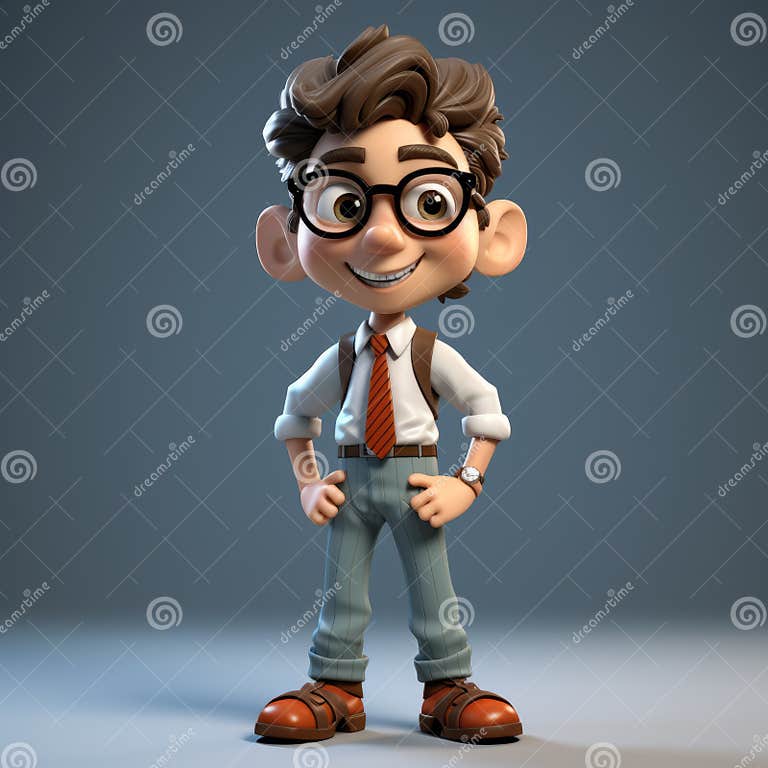When you think about cartoon characters with glasses, your mind probably lights up with all sorts of fun visuals. From the quirky to the cool, glasses-wearing cartoon characters have captured our hearts and imaginations for decades. These characters bring a unique charm to the screen, making them unforgettable icons in the world of animation. But what is it about their glasses that makes them so special? Let’s explore this quirky corner of pop culture together!
You know how sometimes a pair of glasses just adds that extra oomph to someone's personality? Well, in the world of cartoons, glasses do more than just correct vision—they define characters, add depth, and sometimes even become part of their identity. Whether it’s the brainy scientist or the dorky sidekick, glasses play a big role in shaping how we perceive these animated personalities. So, let’s dive into this fun topic and see why cartoon characters with glasses are so darn cool.
As we journey through this colorful world, we’ll uncover the history, significance, and cultural impact of these iconic characters. We’ll also explore how glasses have evolved in animation and why they continue to resonate with audiences of all ages. So, grab your favorite pair of specs and let’s get started!
Read also:Meet The Enigmatic Taraka Ratna Wife Her Journey Secrets And Inspiring Life
Table of Contents
- The History of Glasses in Animation
- Iconic Cartoon Characters with Glasses
- Cultural Impact of Glasses in Cartoons
- The Evolution of Glasses Design
- Psychology Behind Glasses in Animation
- Modern Cartoon Characters with Glasses
- Influence of Anime on Glasses-Wearing Characters
- Glasses as a Tool for Comedy
- Glasses as a Fashion Statement
- Conclusion: Why Glasses Matter
The History of Glasses in Animation
Back in the day, glasses weren’t just about improving eyesight—they were a symbol of intellect, quirkiness, and sometimes even weakness. The earliest cartoon characters with glasses often portrayed the “nerdy” stereotype, but as animation evolved, so did the way glasses were used. By the mid-20th century, glasses became a defining feature for many beloved characters, adding layers of personality and depth.
Take, for instance, the iconic Mr. Magoo, who made his debut in the 1950s. Despite his thick glasses, he was practically blind, leading to hilarious situations that became the backbone of his character. This character not only entertained audiences but also challenged perceptions of what glasses could represent in animation.
From Stereotypes to Icons
Over the years, glasses in cartoons have moved beyond mere stereotypes to become iconic symbols. Characters like Dexter from "Dexter's Laboratory" and Meg Griffin from "Family Guy" use glasses to enhance their personalities, making them more relatable and memorable. The evolution of glasses in animation reflects broader societal changes, where diversity and individuality are celebrated.
Iconic Cartoon Characters with Glasses
Let’s talk about some of the most iconic cartoon characters with glasses. These characters have left an indelible mark on pop culture, and their glasses are as much a part of their identity as their voices or catchphrases.
- Bender from "Futurama" – This robot with glasses is a walking contradiction, blending humor, sarcasm, and a touch of sadness. His glasses add a layer of humanity to his robotic persona.
- Hermes Conrad from "Futurama" – The bureaucratic soul of the show, Hermes’ glasses emphasize his serious and responsible nature, contrasting with his wild antics.
- Professor Farnsworth from "Futurama" – A mad scientist with a penchant for chaos, his glasses are a symbol of his intelligence and eccentricity.
The Quirky Sidekicks
Not all glasses-wearing characters are protagonists. Some of the best sidekicks in animation also rock glasses, adding depth to the stories they’re part of. Characters like Martin Prince from "The Simpsons" and Brain from "Animaniacs" use their glasses to highlight their quirky and intelligent traits, making them fan favorites.
Cultural Impact of Glasses in Cartoons
Glasses in cartoons have had a profound cultural impact, influencing everything from fashion to societal perceptions. In the early days, glasses were often associated with weakness or nerdiness, but as animation evolved, they became symbols of intelligence, creativity, and individuality.
Read also:Hot Asana Yoga Studio Colorado Springs Co Your Ultimate Wellness Retreat
Cartoon characters with glasses have also played a role in breaking stereotypes, showing that wearing glasses doesn’t have to limit your potential. Characters like Meg Griffin and Lisa Simpson have inspired countless kids to embrace their glasses and see them as a source of pride rather than embarrassment.
Breaking Stereotypes
One of the most significant cultural impacts of glasses in cartoons is the way they’ve helped break down stereotypes. Instead of being portrayed as weak or awkward, glasses-wearing characters are now celebrated for their unique qualities and contributions to their respective stories. This shift reflects broader societal changes and highlights the power of representation in media.
The Evolution of Glasses Design
The design of glasses in cartoons has come a long way. From the oversized, thick-rimmed glasses of the past to the sleek, stylish frames of today, the evolution of glasses in animation mirrors real-world trends. Designers have played with shapes, sizes, and colors to create glasses that not only fit the characters’ personalities but also enhance their visual appeal.
For example, characters like Dexter and Lisa Simpson have glasses that are specifically designed to complement their facial features and enhance their unique looks. These designs are not just functional—they’re a form of artistic expression that adds to the overall aesthetic of the animation.
Innovative Designs
Modern animation has pushed the boundaries of glasses design, experimenting with unconventional shapes and styles. Characters like Harley Quinn from "Batman: The Animated Series" and Marge Simpson from "The Simpsons" showcase how glasses can be used as a fashion statement, adding flair and personality to their looks.
Psychology Behind Glasses in Animation
There’s a fascinating psychological aspect to why glasses are so effective in animation. Glasses can convey a wide range of emotions and traits, from intelligence and seriousness to humor and quirkiness. They act as a visual cue that helps audiences quickly understand a character’s personality and role in a story.
Studies have shown that people often associate glasses with intelligence and reliability, which is why so many animated characters with glasses are portrayed as smart or responsible. This psychological association makes glasses a powerful tool in character design.
Emotional Cues
Glasses can also serve as emotional cues, helping to convey a character’s feelings or intentions. For example, when a character adjusts their glasses, it can signal nervousness or hesitation. These subtle movements add depth to the character and make them more relatable to audiences.
Modern Cartoon Characters with Glasses
In recent years, the number of modern cartoon characters with glasses has grown exponentially. Shows like "Adventure Time," "Steven Universe," and "BoJack Horseman" have introduced a new generation of glasses-wearing characters who defy traditional stereotypes. These characters are diverse, complex, and often challenge the status quo, reflecting the changing landscape of animation.
Characters like Marceline from "Adventure Time" and Steven Universe from "Steven Universe" use glasses not just as a functional accessory but as a symbol of their unique identities. Their glasses add an extra layer of depth to their personalities, making them stand out in a crowded animated world.
Diversity in Representation
Modern animation has embraced diversity in its representation of glasses-wearing characters, showcasing a wide range of personalities, backgrounds, and styles. This inclusivity not only enriches the stories being told but also provides representation for viewers who wear glasses themselves.
Influence of Anime on Glasses-Wearing Characters
Anime has had a significant influence on the portrayal of glasses-wearing characters in Western animation. Japanese animation often uses glasses as a tool to emphasize intelligence, mystery, or even villainy. Characters like Light Yagami from "Death Note" and Lelouch Lamperouge from "Code Geass" use glasses to add layers of complexity to their personalities.
This influence can be seen in modern Western animation, where glasses are increasingly used to enhance character depth and intrigue. Shows like "Avatar: The Last Airbender" and "Voltron: Legendary Defender" incorporate anime-inspired designs and storytelling techniques, resulting in more nuanced and compelling characters.
Cross-Cultural Exchange
The exchange of ideas between Western and Japanese animation has led to a richer, more diverse portrayal of glasses-wearing characters. This cross-cultural influence has broadened the scope of what glasses can represent in animation, allowing for more creative and innovative character designs.
Glasses as a Tool for Comedy
Glasses have long been a staple of comedy in animation, used to create humorous situations and enhance comedic timing. Characters like Mr. Magoo and Homer Simpson use their glasses to add layers of absurdity and hilarity to their stories. Whether it’s misplacing their glasses or using them to enhance their quirky personalities, glasses play a crucial role in comedic animation.
The comedic potential of glasses lies in their ability to create unexpected situations and highlight character quirks. When used effectively, glasses can add a touch of humor to even the most serious of stories, making them a versatile tool in the animator’s arsenal.
Classic Comedy Moments
Some of the funniest moments in animation involve glasses-wearing characters getting into ridiculous situations. From Mr. Magoo’s constant misadventures to Martin Prince’s awkward social interactions, these moments remind us why glasses are such a beloved element of animated comedy.
Glasses as a Fashion Statement
In recent years, glasses have become a fashion statement in both real life and animation. Characters like Harley Quinn and Marge Simpson have shown that glasses can be stylish and trendy, adding flair to their overall looks. This shift reflects broader societal changes, where glasses are no longer seen as a mere functional accessory but as a form of self-expression.
Designers have embraced this trend, creating glasses that not only enhance a character’s personality but also make a fashion statement. This blending of functionality and style has made glasses a staple of modern animation, adding visual interest and depth to characters.
Style and Identity
Glasses have become an integral part of a character’s identity, helping to define their style and personality. Whether it’s the bold frames of Marge Simpson or the sleek design of Harley Quinn’s glasses, these accessories add a unique touch to their looks, making them instantly recognizable to audiences.
Conclusion: Why Glasses Matter
In conclusion, glasses-wearing cartoon characters have had a profound impact on animation and pop culture. From breaking stereotypes to influencing fashion, glasses have become a powerful tool in character design, adding depth, personality, and style to some of our favorite animated personalities.
As animation continues to evolve, the role of glasses in shaping characters will undoubtedly grow, offering new opportunities for creativity and innovation. So, the next time you see a cartoon character with glasses, take a moment to appreciate the thought and artistry that went into creating that iconic accessory.
We’d love to hear your thoughts! Who’s your favorite cartoon character with glasses? Share your picks in the comments below and don’t forget to check out our other articles for more fun and fascinating insights into the world of animation.


